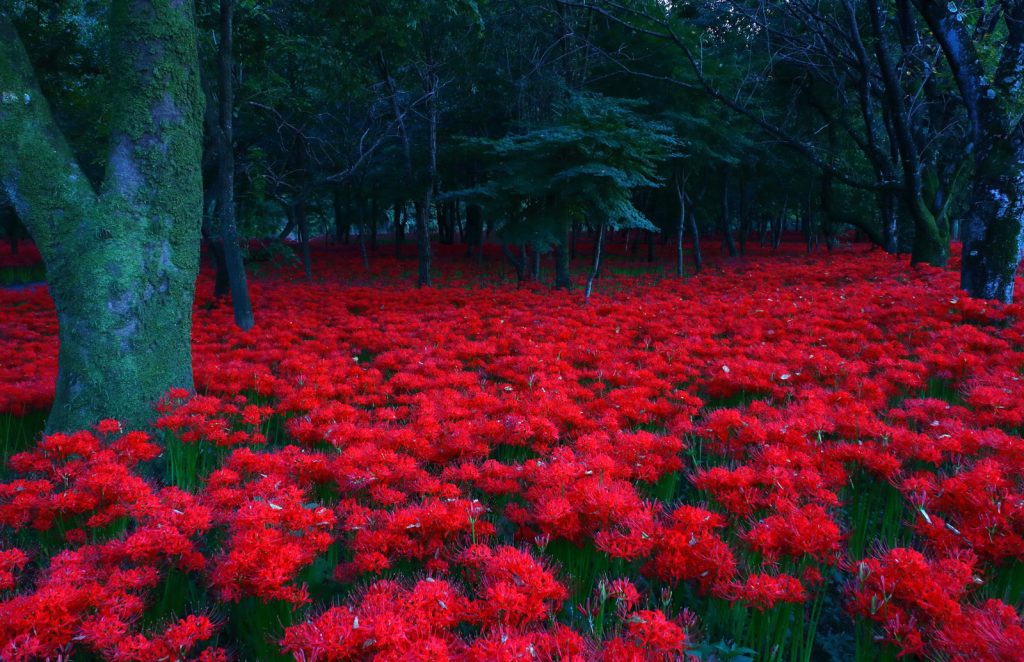This month at the New York Buddhist Church, a Pure Land Buddhist community in Manhattan, we will be observing the Japanese Buddhist holiday Ohigan. Ohigan—which coincides with the spring and autumnal equinoxes—gives us the opportunity to contemplate the reality of our existence and the vow of Amida Buddha [the buddha of pure light] to liberate us.
The weeklong holiday offers a period of personal reflection and remembrance, when many in Japan visit the graves of their ancestors to hold memorial services. Traditionally the time of transition between seasons is believed to bring the world of the living and the dead closer together. Practitioners customarily clean up the grave sites, leave offerings of food and flowers, pray, and recite sutras.
But Ohigan has another significance. Its name literally means “the other shore.” In early Buddhist teachings, the path to enlightenment is described as traveling from the near to the far shore. The term also evokes the dualism of our lives as well as the oneness of the totality of our existence. That’s because the other shore can be reached in this lifetime by entrusting in the Buddha’s vow.
The observance of Ohigan is a tradition said to have been inspired by Prince Shotoku (574–622), a semi-legendary figure who is considered the first great patron of Buddhism in Japan. The holiday is also based on the teachings and writings of the Chinese scholar and monk Shan Tao (613–681), or Zenda Daishi in Japanese. Shan Tao was one of the Seven Great Masters, or Seven Patriarchs (Jpn., Shichikousou), who helped develop Pure Land Buddhism. In the chant Shoshin Nembutsuge, Shinran Shonin, the founder of the Jodo Shinshu sect, expresses gratitude to the Seven Great Masters for helping him understand the universal vow to save all sentient beings. Shan Tao, the fifth master, was best known for discussing the virtues of reciting the name of Amida Buddha.
To help us understand the great vow, Shan Tao used a parable called the “The River of Fire and Water.” In this tale, a traveler suddenly discovers that he is being chased by vicious beasts and demons. The traveler runs as fast as he can, but soon encounters a river that blocks his escape. The only way to cross is to take a very narrow path where the water is shallow. On one side of the path there are rough waves and on the other side there are great leaping flames. The traveler is conflicted: to remain on this shore means certain death, but to go forward may mean a terrible end, too.
As he fearfully contemplates his fate, he hears a gentle voice encouraging him to go forward and telling him that there is nothing to fear. Still doubtful, he looks ahead at the other shore, where he sees the Amida Buddha with open arms beckoning him to come forward. To remain here on this shore means certain suffering and death; to go forward may mean suffering and death, but also provides hope. The traveler seizes the opportunity. Entrusting in the beckoning of Amida Buddha, he takes the first step, then the second. With each following step the narrow path miraculously widens, allowing the traveler to safely reach the other shore.
This parable demonstrates the meaning of Amida Buddha’s vow to save and free all of us from the endless cycle of birth and death. The traveler learns that doubt is what keeps us from seeing clearly, especially our rebirth in Amida’s Land of Bliss. The beasts and demons in this story represent our fears, illusions, and delusions. The rough waves and river of fire are our hatred, insatiable desires, and ignorance. The path is hope and freedom from suffering. For Shao Tan, the way across the river was to call the Buddha’s name, Namo Amida Butsu, which he emphasized in numerous writings as the greatest practice that would lead to freedom from samsara (the beginningless cycle of rebirth). He is said to have recited Namo Amida Butsu thousands of times each day.
Shinran’s teacher, Honen Shonin (1113–1212), was deeply moved by Shan Tao’s thoughts and shared this practice for awakening to truth with his disciples as a way of showing his gratitude.
In order to reach the other shore, one does not have to wait for the end of one’s life. We can all reach the other shore right now by hearing and entrusting in the Buddha’s vows and allowing Buddha’s energy to fill our hearts and minds with wisdom, compassion, and thoughts to help us transcend the ordinary.
Namu Amida Butsu.
Thank you for subscribing to Tricycle! As a nonprofit, we depend on readers like you to keep Buddhist teachings and practices widely available.
